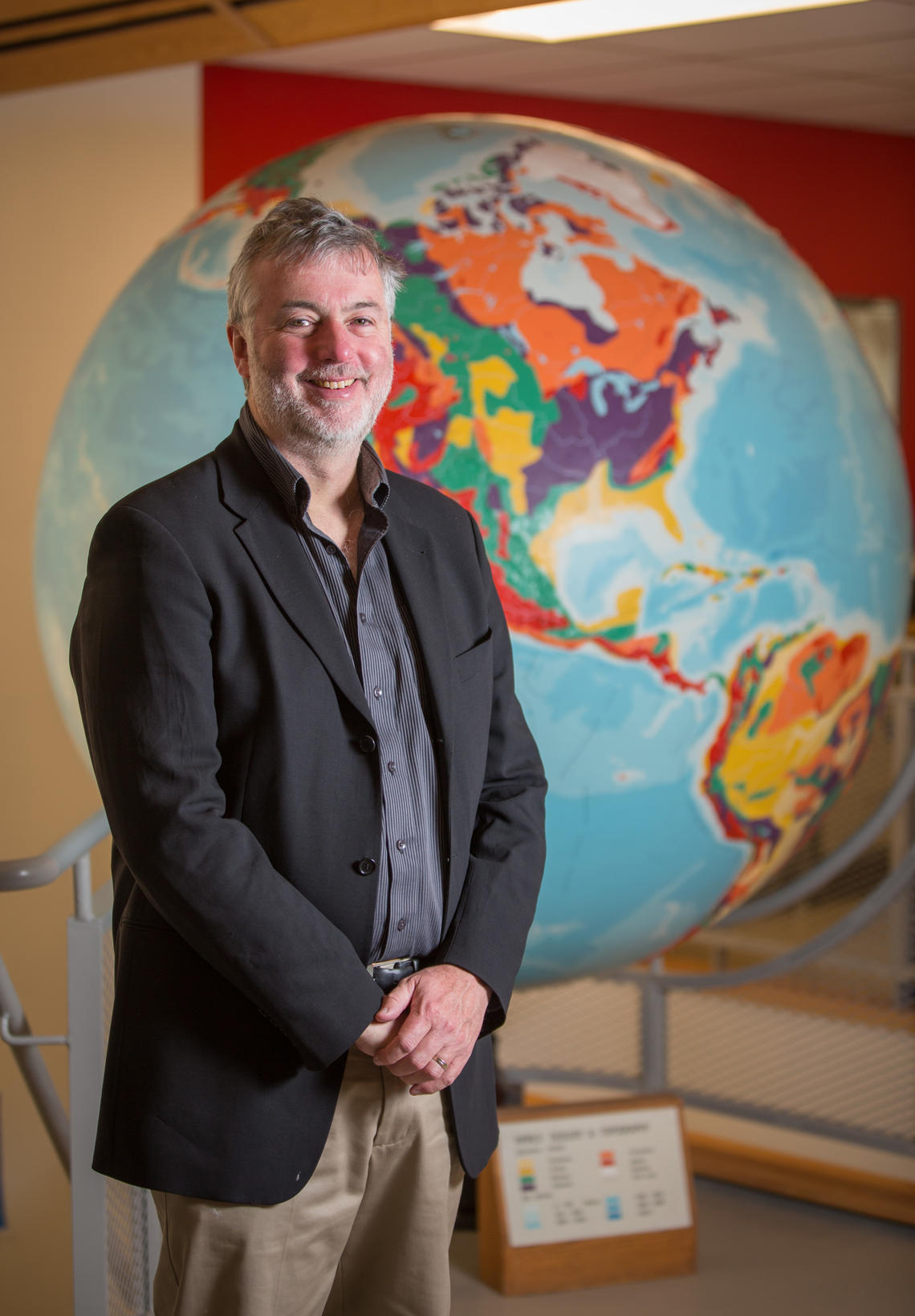
Eric Donovan says his call to Faculty of Science members yielded more than 350 responses.
Riley Brandt, University of Calgary
Oct. 3, 2017

Eric Donovan says his call to Faculty of Science members yielded more than 350 responses.
Riley Brandt, University of Calgary
Eric Donovan remembers the first time he worked on a computer. It was 1982, and the latest in personal computing was a first generation IBM PC complete with a 5¼ inch, 64 kb floppy disk drive. At the time, floppy disks cost about $10 apiece.
Donovan is now the Faculty of Science’s associate dean research and graduate education, in an age where computers are integral to everyday life. After purchasing a two-terabyte hard drive for around $100, he was curious: how much would it cost to store two terabytes of data on 5¼ 64kb floppy drives in 1982?
“The answer is more than $300 million,” he says. “And the volume required for all that storage would be about 1,500 cubic metres.”
In 1982, things like quantum networks and smartphones were inconceivable to the general public. Indeed, as Donovan says, “If you look at what’s happening with computer technologies, as an example, this transformation is as significant as the invention of the printing press, and it’s all taking a lot less time to happen than anyone ever thought it could.”
The world is changing rapidly — faster than the brightest researchers could have imagined 35 years ago, when 64kb floppy disks were on the cutting edge of technology. The ever-accelerating innovation in scientific areas such as computing, space exploration, clean technologies, renewable energy, and molecular research bring indisputable benefits, and help us address some of society’s local and global challenges.
As part of its renewed strategic priorities, the Faculty of Science at the University of Calgary will be directing its research efforts toward four Grand Challenges that harness current strengths, look to future opportunities, and allow the faculty’s researchers to explore and discover.
The four themes arose naturally from input from faculty members across all departments. “The Grand Challenges are 100-per-cent grassroots,” says Lesley Rigg, dean of the Faculty of Science. “Eric put the questions out: What’s a question that your research answers? What’s a question that your colleagues’ research answers? And what’s an aspirational question we could address as a faculty?
“We got hundreds of responses and the faculty’s Research and Scholarship Committee found it remarkably straightforward to group the responses in the buckets that we ended up with.”
The Grand Challenges
The Grand Challenges align with the University of Calgary’s Strategic Research and Academic Plans, and are research areas where the faculty is poised to make major strides. “We matter on the world stage under these banners,” Donovan says. “These are areas where we have people who are positioned to have a huge impact on the world.”
Understanding Earth’s Evolving Systems
Energy in Transition
Unlocking our Digital Future
Personalized Health at the Molecular Level
The Grand Challenges are built on three research platforms: fundamental research, major facilities, and data science and our sensorized world.
‘We should try to inspire people with what we do’
Donovan says the process to identify the Grand Challenges was straightforward, though his call to faculty members to identify their strengths, their colleagues’ strengths, and the faculty’s capabilities yielded over 350 responses.
“It was a very positive experience, and a very inspiring experience,” Rigg explains. “What was really neat about it was people in the faculty recognizing what their colleagues do, and what their colleagues had the capacity to do in terms of aspirational goals and challenges. In their responses, people were talking not only about their own work, but about other peoples’ work. It highlights that those values arise naturally from the dynamics of the people in the faculty.”
“The Grand Challenges process was a lot of fun, and it really made me feel good about the faculty,” Donovan says. “Matching strengths with opportunity is at the core of the university’s Strategic Research Plan. We’re doing a good job of this here,” he says, while also noting that the Grand Challenges are well aligned with the university’s Strategic Research Plan.
"The research we do has purpose, and I think we should try to inspire people with what we do.”